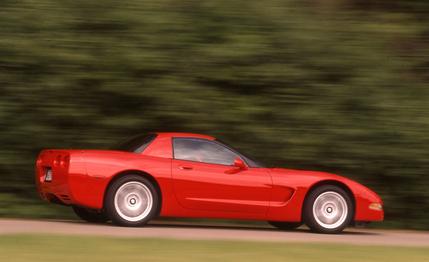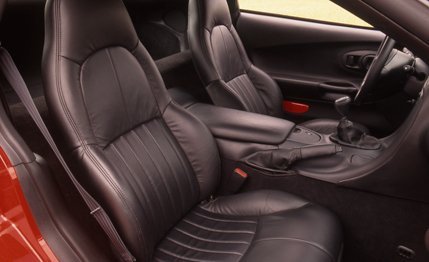
 Archived Road Test
Archived Road Test
Dream for a moment: Would you like a lighter and cheaper version of the Corvette? Chevy now has one, a new fixed-roof hardtop model that comes equipped just one way—with a six-speed manual transmission and the firmer K51 suspension. We estimate it will cost $37,500, which is about $2400 less than a similarly equipped '99 hatchback.
The new model doesn't have the hatchback' s standard power driver's seat, and it doesn't have a choice of options such as the F45 adjustable suspension, the dual-zone air conditioning, or the new-for-'99 power-telescoping steering wheel and so-called head-up instrument display. And you can't remove the roof.


But is this new hardtop the "club sport” corvette of your autocross-driving 'dreams?
The hardtop is 79 pounds lighter than a comparably equipped '99 hatchback coupe, due to the elimination of the heavy glass hatch and removable roof panel, which are replaced by a fixed fiberglass roof with a much smaller rear window.
The diet makes the 345-hp hardtop quicker than the identically powered coupe. Our hardtop zipped to 60 mph in 4.8 seconds; the last three C5 coupes we've tested averaged 4.9 seconds to 60 mph. The hardtop turned the quarter-mile in 13.2 seconds at 110 mph; our '98 hatchbacks averaged 13.3 seconds at 109 mph.
Despite the hardtop's improved acceleration numbers, Chevy says it is not as aerodynamic as the coupe—the steeper slope of the hardtop's rear window creates some drag-inducing turbulence. Our tests confirmed that: Flat out, the hardtop hit 169 mph, whereas our most recent slant-backed coupe went 171 mph and earlier editions made it to 175 mph.


The hardtop is the first fixed-roof Corvette since the 1963-67 Sting Ray coupe. When the C5 was being developed three years ago, Chevy asked chief engineer Dave Hill to figure a way to make a cheaper Corvette. At the time, the factory in Bowling Green, Kentucky, wasn't selling all the Corvettes it could make. Hill says he looked at a C5 coupe's one-by-four-inch-thick tubular steel roll hoop and imagined it fastened to the body of a convertible, covered by a lighter but stronger fixed panel without the heavy glass of the hatchback.
Originally, the hardtop was to be a stripper that would put a Corvette in at least double the number of driveways it occupied at the time, if not on every American block. So prototypes were built with cloth-covered, manually operated seats; smaller 17-inch tires front and back; and a few other cost-saving tricks by Chevy. For example, these prototypes were built with the less-expensive four-speed automatic transmission (about 60 percent of Corvettes are sold with automatics). In these prototypes, the cost cutters also left out the electronically variable shock-damping system, the traction control, and the brake-controlled active-handling stability system.
Chevy says customers who saw the prototype strippers were almost unanimously turned off by the budget Vettes. Meanwhile, Corvette sales have boomed. So the company restored the stability system (optional) and leather seats (standard) and put back the 18-inch rear tires that are standard equipment on coupe and convertible Corvettes. The automatic transmission was dropped, and the six-speed manual gearbox, normally an $815 option, was added at no cost, as was the $350 Z51 suspension package. This prototype the customers liked. "This is not a stripper," adds Hill.